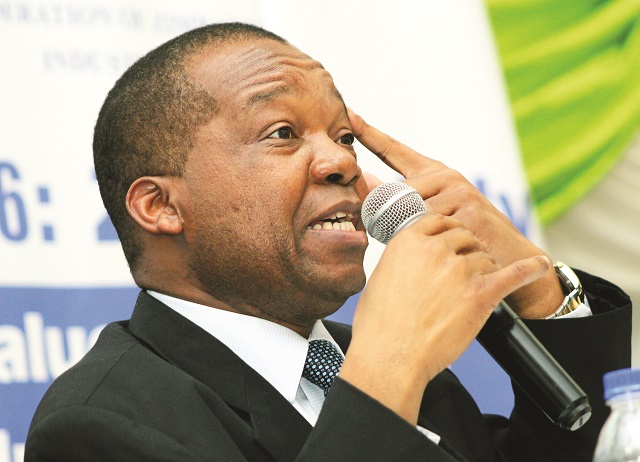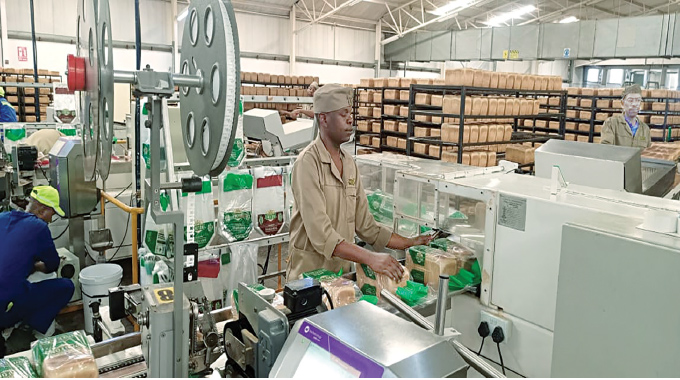Strengthening MSMEs, MFIs nexus for economic growth


Small to Medium Enterprises exhibit their wares at the National Gallery of Zimbabwe in Bulawayo in this file picture
Prosper Ndlovu, Analysis
THE Micro-Small to Medium Enterprise (MSME) sector is fast becoming a key economic player in Zimbabwe. Not only does it create jobs for thousands of unemployed ordinary people in a difficult economic environment it also assists in poverty alleviation.
The 2012 Finscope Survey revealed that MSMEs in Zimbabwe employ approximately 5.7 million people, a majority of whom are women. In addition, it is estimated that the MSME sector is contributing more than 60 percent to the country’s GDP.
Ironically, the sector remains financially starved as many financial institutions continue to give a cold shoulder to the plea of indigenous entrepreneurs. As Reserve Bank of Zimbabwe (RBZ) Governor Dr John Mangudya put it: “most financial service providers do not have the requisite knowledge and skills to finance SMEs”.
Both large scale banking and micro-finance institutions have been found wanting in terms of supporting growth of budding businesses. Exorbitant interest rates and stringent lending terms have repelled many MSMEs from accessing critical funding while those who have got it are sweating under the debt burden.
Now that the apex bank has capped bank interest rates at 12 percent and 10 percent for micro-financers from previous levels of between 30 and 40 percent, the era of obscene gains is over and only those with innovative minds will survive.
“There is need to re-orient financial institutions towards approaches that are different from the traditional approach used for the corporate sector,” said Dr Mangudya in his 2017 monetary policy statatement released last week.
These new approaches, he added, require financial institutions to establish proper strategies, oversight mechanisms and analytics while introducing products and services that are suitable for the sector.
Few institutions like MoB Capital Limited, a Bulawayo-based micro-finance firm, have come up with innovative programmes to avail funding to sound business projects from tertiary learning institutions. The firm also runs an SMEs incubation programme where it provides advisory services and finance to small businesses in Bulawayo.
MoB, in partnership with the National University of Science and Technology (Nust), recently launched what has come to be known as the “Yes Campaign Fund”. The initiative involves financing of all “great” business projects from Nust using MoB Capital’s venture capital division.
“This is meant for the extra talented, with viable and sustainable business ideas, the ability to payback and offer employment opportunities,” MoB managing director Mr Morris Mpala said.
“For any great project MoB Capital will fund it without security. The campaign is a grooming exercise for future leaders and entrepreneurs.”
He said implementation of the funding programme will be spread to other colleges and universities. Under the programme Nust, through its Technopark division, which forges partnerships with industry and commerce, will be used as the launch pad with five students who will come up with viable business proposals set to get funding of up to $2 500 each. Other training institutions are set to receive $1 500 per best proposal with $1 000 for students at polytechnics.
Such initiatives will no doubt propel young businesses into big corporates that will provide more employment opportunities. The success of such businesses will also expand the clientele for the same finance houses.
Given the variety of projects done by MSMEs, the opportunity for funding is wider for the dozens of micro-finance houses that Government licensed recently. With the demise of large scale industries in the last few years, more SMEs have emerged in different sectors such as manufacturing, construction, textile, tourism, agro-processing, consultancy and engineering. Interestingly a majority of project pioneers are retrenched workers among them managers and technicians who still possess the requisite skills and knowledge of their fields. Some are college and university graduates who have brilliant business ideas.
Banking institutions and microfinance institutions, therefore, need to make deliberate and structured efforts to understand the peculiarities of the MSMEs sector and avail necessary support. This also requires provision of appropriate training and stakeholder engagement that will result in development of products that suit the needs of SMEs.
Given the demand for accommodation, for instance, microfinance institutions have also been challenged to develop innovative housing micro-finance facilities in line with developments in other countries. In that regard Dr Mangudya pledged that RBZ would complement by partnering with development institutions to facilitate training of financial services providers in the area of SMEs financing during the first quarter of 2017.
The central bank also stressed the need to remodel the micro-finance segment in particular given its potential to act as a catalyst for financial inclusion.
“Micro-finance has been identified as an important pillar of financial inclusion, which has the capacity to provide a wide array of financial services to the previously marginalised and unbanked sections of the population, through job creation, funding of MSMEs, and home industries, which are largely shunned by banks,” said Dr Mangudya.
He said the nexus between microfinance and economic development should be nurtured properly as part of long term measures to mitigate poverty, facilitate women empowerment and enhance financial inclusion.
For a long time finance houses have concentrated their operations in urban centres. With a shift in the economic dynamics of the country since the turn of the millennium, more opportunities abound outside towns. In this regard, reference has been made to viable agri-business, both crop and livestock – tribute to the successful land reform programme. Mining towns and districts are also serious economic hotpots. Evidence on gold deliveries by small scale miners to Fidelity Printers, tell the whole story. Yet these new economic zones do not have access to finance to boost their operations.
Hence experts have implored micro-finance institutions to leverage on mobile technology to provide their clients with a wider array of financial products through agent banking and mobile banking. This will ensure that entrepreneurs in remote districts like Binga, Hwange, Nkayi, Gokwe and Tsholotsho, gain access to loans and participate in the formal transacting systems.
As such micro-finance institutions, said Dr Mangudya, need to strengthen their corporate governance structures and risk management systems in order to build sustainable financial institutions that can grow and provide financial services on a permanent basis to an increasing proportion of the low income and marginalised groups.
The Reserve Bank, in collaboration with the World Bank, recently commissioned a microfinance diagnostic review of the sector. The main objective of the exercise is to provide baseline data on the microfinance industry, which will inform policy and development of supportive legal and regulatory frameworks.
Results of the diagnostic review are expected to provide input into the formulation of coordinated activities towards building a robust and sustainable microfinance sector in Zimbabwe.











Comments